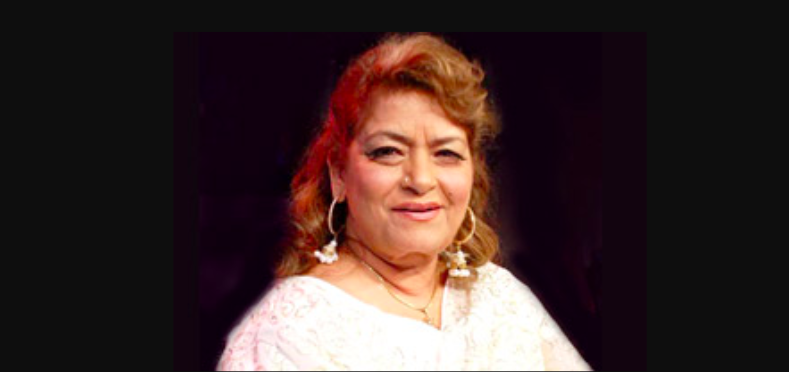Saroj Sardar Roshan Khan was the most prominent of Hindi cinema dance choreographers. Known as The Mother of Dance/Choreography in India, she has to her credit more than 2,000 songs during a four decade career.
A beautiful teacher and human being, Saroj brought grace, dignity, expression and style to dance. Blending Indian classical dance with modern beats, she made dance look easy enough for anyone to dance. Vibrant, smiling, jovial and an inspiration, she single handedly changed the landscape of how songs were shot. She taught actors to work hard and lucky were the ones who got to learn adayaki from her. Many things to many people, she defined an era of dancing with abandon, emotion and passion and was an iron lady who called a spade a spade! Taskmaster, perfectionist, innovator, trendsetter, a genius who immortalised stars.
She gave the idea of sensuality a place in Bollywood. Her lasting legacy is how she could utilise the facial expressions of her dancers to craft popular, fast-paced songs. While her works fell within the ambit of populist framework, she left enough scope for the camera to lovingly capture the expressions of her lead dancer. Her dances spoke and were not merely visual treats.
Born Nirmala Nagpal in Mumbai in 1948, to parents who migrated after Partition, she started her career as a three- year-old child artiste with the film Nazarana as baby Shyama, and was a child background dancer in the late 1950s in films like Bimal Roy’s Madhumati. She learned dance from the well-known dance master of the day, B. Sohanlal, whom she supposedly married in 1961 at the age of 13. He was 43 years and already married with four children, which she was unaware of. The couple separated in 1965 and she later married businessman Sardar Roshan Khan in 1975 and had a daughter by him. Saroj Khan soon shifted to choreography, first as an assistant choreographer and then as an independent choreographer with the film Geeta Mera Naam (1974). However, acclaim came only 13 years later with her quirky Hawa Hawai number in Mr India (1987), with Sridevi dancing her heart out, and Laxmikant Pyarelal’s foot-tapping music and the sensuality of Kaate Nahin Kat Te. Her best iconic dance hits are arguably with late Sridevi and Madhuri Dixit even as she collaborated with practically all the biggest stars. She also trained a slew of choreographers who went on to make a big name for themselves.
Main Teri Dushman, Dushman Tu Mera and Main Nagin Tu Sapera in Nagina (1986), Ek Do Teen in Tezaab (1988), and those alluring chiffon sari-clad Sridevi images from Switzerland in Chandni (1989) as she sings to her love Mere Haathon Mein, all materialised only with Saroj’s magical touch. Others popular songs she choreograped included Tamma Tamma Loge ( Thandedaar), Dhak Dhak Karne Laga (Beta), Choli Pe Peeche Kya Hai ( Khalnayak), Ole Ole( Yeh Dillagi), Nimbooda Nimbooda (Hum Dil De Chuke Sanam), Dola Re Dola ( Devdas) , Barso Re Megha, Guruand her last choreography for the song Tabaah Ho Gaye from Kalank filmed on Madhuri were some of the popular songs she choreographed.
Winner of three National Film Awards and eight Filmfare Awards, she also won the American Choreography Award 2002, Nandi Awards 1998, and the Kalakar Awards 2011, etc. In 2012, The Saroj Khan Story, a Films Division documentary directed by Nidhi Tuli was released. Saroj appeared on television reality dance shows like Nach Baliye, Ustaadon Ka Ustaad, Nachle Ve, Boogie Woogie and Jhalak Dikhhla Jaa. She also acted in the TV serial, Taarak Mehta Ka Ooltah Chashmah as a judge in a dance competition.
Saroj died in Mumbai of cardiac arrest, and is survived by her husband Sardar Roshan Khan, a son and two daughters. In her passing, an era of Bollywood dancing has lost its sheen.


 [/column]
[/column]